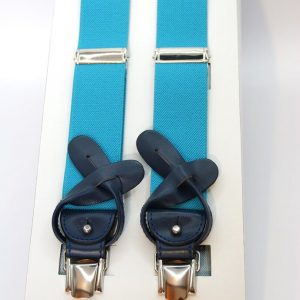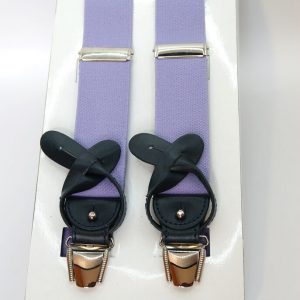10 Essential Ties
There are several ways to tie a tie. Certain necktie knots should be used with certain shirt collars and tie fabric materials to get the best results for your appearance. Tying a tie is something every man should know how to do.
How to Tie a Four-in-Hand Knot
The four-in-hand knot is a method of tying a necktie. It is also known as simple knot or schoolboy knot, due to its simplicity and style, this is probably the most widely used tie knot because it’s so easy to tie. It is easy to tie, slender, tapered, mildly asymmetrical and self-releasing. If you only learn one knot, make it the Four-in-Hand.
1. Drape the tie around your neck. The wide end should extend about 12 inches below the narrow end of the tie. Cross the wide part of the tie over the narrow end.
2. Turn the wide end back underneath the narrow end.
3. Continue wrapping the wide end around the narrow end by bringing it across the front of the narrow end again.
4. Pull the wide end up and through the back of the loop.
5. Hold the front of the knot with your index finger and bring the wide end down through the front knot.
6. Tighten the knot carefully by holding the narrow end and sliding the knot up. Center the knot.
How to Tie the Half-Windsor Tie Knot
The Half Windsor knot is an extremely versatile knot. It’s best worn with a standard collar. The Half Windsor is medium in size, nearly symmetrical and, when tied correctly, it produces a deep and substantial dimple.
1. Drape the tie around your neck. The wide end should extend about 12 inches below the narrow end of the tie. Cross the wide part of the tie over the narrow end.
2. Bring the wide end around and behind the narrow end.
3. Bring the wide end up and pull it down through the hole between your collar and tie.
4. Bring the wide end around the front, over the narrow end from right to left.
5. Bring the wide end up back through the loop again.
6. Pull the wide end down through the knot in front.
7. Tighten the knot and center it with both hands.
How to Tie a Windsor Knot
Although the Duke of Windsor never specifically used the Windsor knot, he did favor a wide triangular knot. In actuality, the Duke achieved his trendsetting look by tying a Four-in-Hand with especially made wide and extra thick ties. There are several derivatives of the Windsor that are all referred to by the same name. This tie knot is the best worn with a wide spread collar.
1. Drape the tie around your neck. The wide end should extend about 12 inches below the narrow end of the tie. Cross the wide part of the tie over the narrow end.
2. Bring the wide end of the tie up through the hole between your collar and the tie. Then pull it down toward the front.
3. Bring the wide end behind the narrow end and to the right.
4. Pull the wide end back through the loop again. You should have a triangle now where the necktie the knot will be.
5. Wrap the wide end around the triangle by pulling the wide end from right to left.
6. Bring the wide end up through the loop a third time.
7. Pull the wide end through the knot in front.
8. Tighten the knot and center it with both hands.
Hot to tie Oriental Knot
The Oriental Knot contains the fewest possible steps and is very easy to learn. Despite its simplicity, this knot is rarely worn in the West but maintains popularity in China. This may be because it is not self-releasing, making it more difficult to untie. The Simple knot is compact with an asymmetry causing it to lean toward the active end. This knot works well with thick neckties or for tall guys who need a little extra length. Live the simple life.
1. Drape the necktie around your collar with the seam facing inward. The thick end should be hanging on your left, with the narrow end on your right.
2. Bring the thick end horizontally across the front of the narrow end, and then pass it back horizontally behind the narrow end so that the thick end finishes up on your left side once again. The seam should now be facing outward on the thick end.
3. Continue wrapping the thick end around the thin end, making another horizontal pass across the front of the knot from left to right. You can lay this right on top of the first horizontal pass.
At this point the tip of the thick end should be pointed to your right, with the seam facing inward.
4. Continue wrapping the thick end around behind the knot, passing it horizontally from right to left for a second time. This can lie directly on top of the last horizontal pass behind the knot that you made in Step 2.
5. Bring the thick end of the tie back across the front of the knot in a third horizontal pass from left to right. The tip of the thick end should finish pointing to your right, with the seam facing inward.
This time you can go ahead and slip a finger under the final horizontal band you’ve just created. You’ll be passing the necktie through it in the next step.
6. Bring the tip of the thick end up underneath the loop around your collar, feeding it upward behind the knot.
Flip the tip downward over the front of the knot and feed it through the final horizontal loop that you created in Step 5, with the tip pointed downward and the seam facing inward.
7. Pull the thick end all the way through the horizontal loop across the front of the knot and snug it down firmly.
At this point you have the finished shape of the knot, and it should hold together without your help. The narrow end should be hidden entirely behind the thick end.
8. Adjust the necktie by holding the knot in one hand and pulling gently on the narrow end with the other.
The knot is self-releasing, meaning you can pull the narrow end straight up out of the knot to untie it. The rest of the loops will simply collapse without it.
Use the simple knot any time you would use a four-in-hand — it’s a reliable choice for men who like a smaller-structured tie knot, and works equally well in business and social situations.
How to Tie Kelvin Knot
The Kelvin necktie knot is named after Lord Kelvin (William Thomson, 1824-1907) a mathematical physicist who contributed to the theory of knots in relation to atomic structure. The Kelvin is an extension of the Simple knot. Like the Simple knot, the Kelvin starts with the tie lying inside out resulting in an inverted tail. This knot produces a lithe and tidy knot similar in size to the Four-in-Hand but slightly fuller and more angular.
1. To start, the wide end should be on the left.
2. Bring the wide end under the narrow end to the right, back over to the left, under to the right, and over to the left a last time.
3. Bring the wide end up through the loop at the neck and then back down through the knot. Tighten.
How to tie a Grantchester Knot
The Grantchester knot is a self-releasing, asymmetric way of tying a necktie.
1. To start, the wide end should be on the right.
2. Bring the wide end under the narrow end to the left, back over to the right, under to the left, and over to the right a last time.
3. Bring the wide end up through the loop at the neck and then over to the left, under to the right and over to the left.
4. Bring the wide end up through the loop at the neck and then back down through the knot. Tighten.
How to Tie Pratt Knot
Jerry Pratt, the inventor of the Pratt Knot, worked for the U.S. Chamber of Commerce. For 30 years, Mr. Pratt had tied his necktie in his distinct fashion before anchorman Don Shelby “discovered” and publicized it on local television in 1989.
When articles about the “Shelby Knot” (as it was called then) appeared in the New York Times and the New York Daily Telegraph, the knot’s popularity shot up dramatically. The Pratt knot is versatile, elegant and of medium size, between the Four-in-Hand Knot and the Half Windsor Knot.
1. To start, the wide end should be on the right.
2. Bring the wide end under the narrow end to the left and then over to the top down through the loop at the neck.
3. Bring the wide end under to the left and over to the right.
4. Bring the wide end up through the loop at the neck and then back down through the knot. Tighten.




